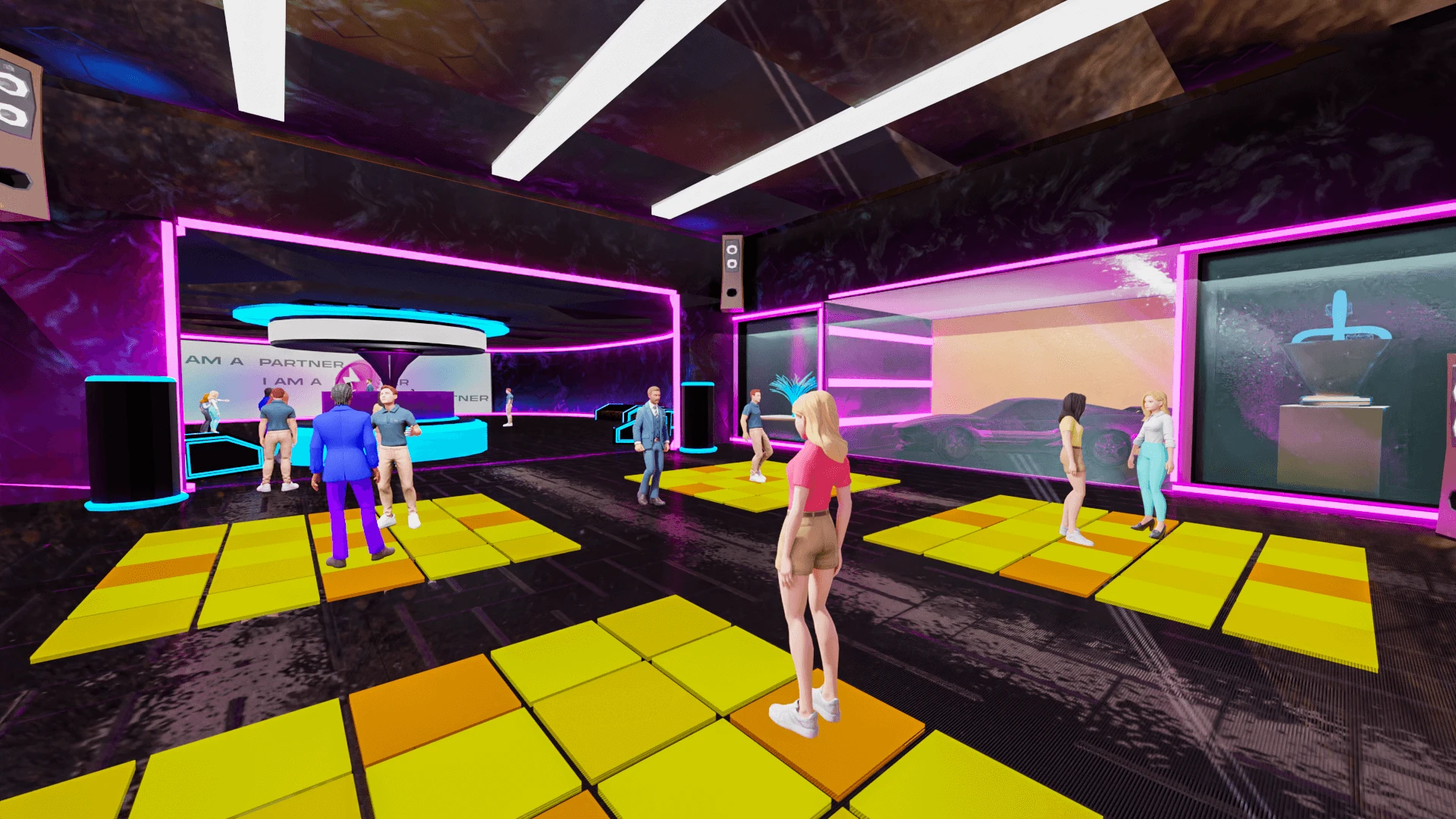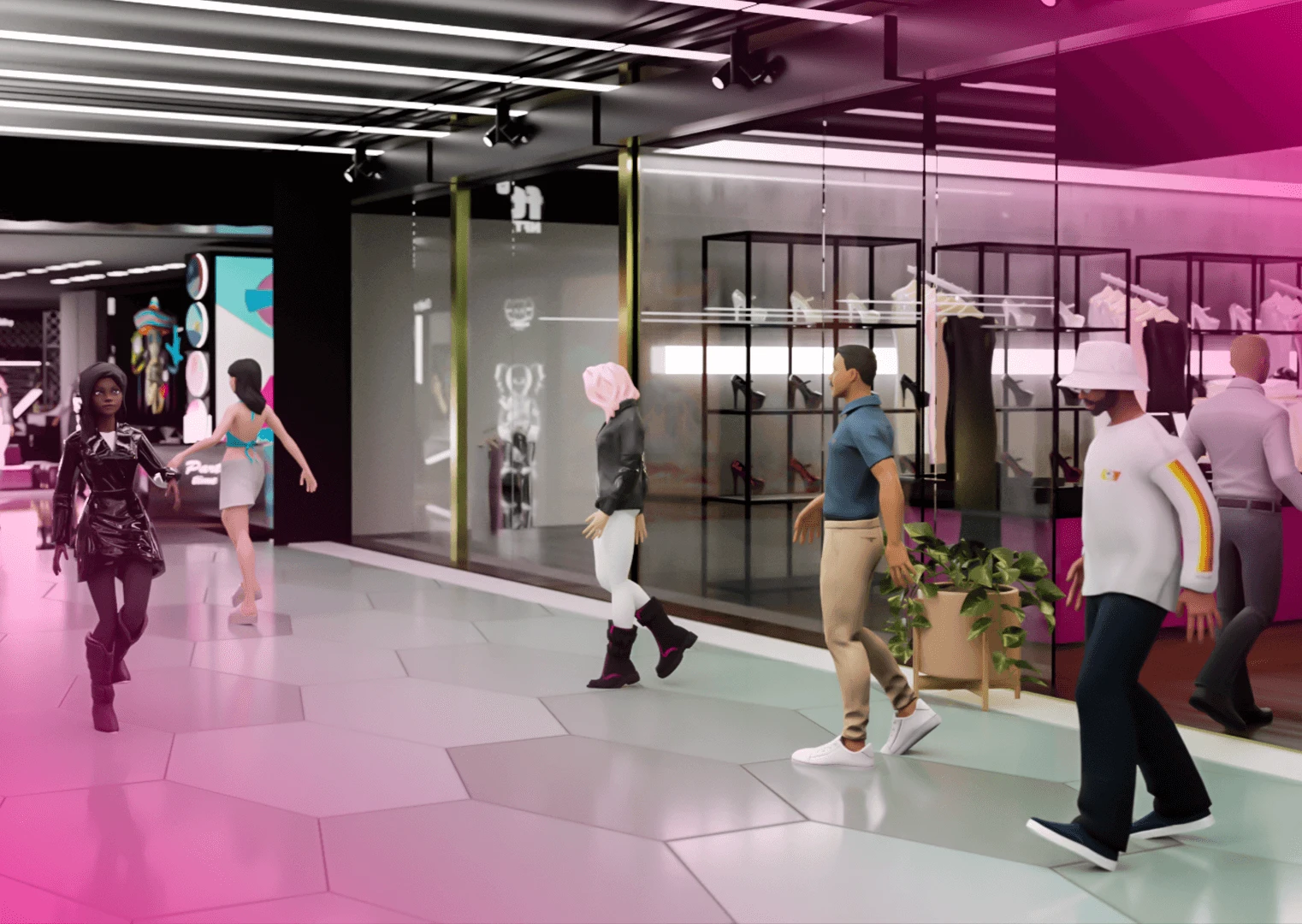Hosting virtual events offers a range of benefits - from low travel costs to ease of access and endless customization opportunities to turn your conference, expo, or meeting into a memorable experience. This is why many organizations have switched from in-person physical gatherings to digital ones. But how do you exactly plan a metaverse event?
In this article, we will go through all the steps you will need to take to host an event in the metaverse and include a few tips to make it a success. We'll also explore the future of event planning in the metaverse so you can prepare for what's to come. So, let’s get started!

The Impact of the Metaverse on Meetings and Corporate Events
Virtual events have already had a massive impact on the entertainment industry. For example, did you know that Lil Nas X’s concert on Roblox was viewed more than 33 million times? Or that Travis Scott’s Fortnite performance spread across the entire island and included a giant spaceman and players being submerged in water?
Every day, more companies are turning to run their expos, fairs, conferences, and events online, creating new and memorable metaverse experiences that help them promote their products and services and reach new audiences in a highly immersive manner. This new space is, after all, an ideal location for social interaction and exchange and a great opportunity for advertising, too! So, have you considered hosting a metaverse event yourself?
The Future of VR and AR Event Planning
Fashion shows, auctions, and art projects are just some of the things happening in the metaverse today, so we can only expect events to expand and improve in the coming years! Of course, we’re not yet at a point where we can replace a stadium with 100,000 people with a digital experience (the Travi concert was not a single metaverse but a series of smaller worlds containing a couple of hundred players).
However, as computational power increases and networks get more complex, we’ll surely see simulations grow in capacity. In a short space of time, we’ve seen the metaverse develop incredibly rapidly. Without a doubt, the metaverse will be at the center of event organization, so why not get ready right now?

How to Plan and Host an Event in the Metaverse In 5 Steps
We’ve gone through the main benefits of hosting an event in the metaverse and why we can expect these to just become more and more popular in the coming years. Now, it’s time to go through the steps to make sure your metaverse event is a success!
Step 1: Determine Your Goal
The most important thing before thinking about budgets or marketing materials for your event is to define your goal. What’s your purpose? What do you expect to achieve? Here are some questions to help you get started: Are you going to host sessions live or pre-record them? Will your audience just listen, or should they be able to ask questions and participate? And are your potential visitors already familiar with virtual events?
Step 2: Find the Perfect Venue and Platform
You will want to make sure that you pick a platform and a space that matches your events’ needs. There are many that can be customized, so make sure you visit them and explore what they have to offer. Some popular ones you can check right now include:
- Cerebrum Progressus (formerly PandaMR): Cerebrum Progressus (formerly PandaMR) is a pioneer metaverse for businesses where you can create digital spaces for events and education. The platform offers virtual 3D offices, venue locations, and lecture halls, as well as step-by-step guidance so you can adapt the spaces to your needs. What’s more, you can use community-created rooms and buildings or design your own from scratch!
- Virtway Events: Virtway Events is an avatar-based platform that allows you to create virtual events using realistic venues. For example, you can host an event on a sunny beach, create exclusive showrooms, or hold concerts all from the same place.
- Breakroom Metaverse: Breakroom Metaverse is a 3D virtual world for hosting immersive conferences and events with a sense of physical presence. The company offers unlimited floor space and customizable spaces.
It’s crucial to always leverage scalability. You should look for a digital event venue that allows you to, for example, add more rooms if you get more visitors than you initially expected. This is where the physical world can limit your conference or event - and where the metaverse opens the door to a whole range of interactive and scalable experiences!
Step 3: Make Sure Your Attendees Can Join
Most metaverse or virtual event spaces will require visitors to use some sort of device or hardware. In most cases, this can be a simple smartphone or tablet, although some people might prefer a desktop computer or a VR headset. Whatever is needed to join, make sure you explain it to your attendees so they can have the best experience possible.
An easy way to do this is to prepare in advance a how-to video explaining everything necessary to join the event. For example, you can cover the basic requirements and show step-by-step instructions for signing up and joining the event. Some companies also allow people to visit the venue beforehand (while it’s empty) so they can get familiar with the interface. You can also hold video training sessions for visitors and exhibitors, so everyone is comfortable later.
Step 4: Generate Opportunities for Exploration and Social Interaction
You probably don’t want to constrain your attendees to a seat. Just like in the real world, people will want to walk around and talk to others. Something many virtual events do to create these networking opportunities offers less structured spaces outside the venue itself. For example, a beach or a park where users can go and chat.
You can also use these additional spaces to create engaging games and promote shared experiences. For instance, by adding a treasure hunt, having areas with music, or including interactive objects or games. In fact, you can also add physical experiences, too. Some event organizers, for example, send attendees something in advance (like snacks or items) so they share more meaningful moments together.
Step 5: Look After Your Guests
Before you launch your event, make sure you test all your features and devices. Check that the invitation links are working, that speakers’ microphones can be heard, and that avatars are ready. Then, once your event has started, try to be available to provide help to your visitors. Remember, you are the host, so pick an avatar that looks similar to yourself and dress to impress. And have fun!
More Metaverse Event Planning Musts

Just like with anything, if you want to become great at hosting metaverse events, practice is key. So, here are some lessons we learned from running our own, and that might come in handy:
- Most people will be joining your event at the same time because they will be used to exact schedules. Be ready to have to welcome dozens of people at the same time and coming from the same spot! You can also explain in your invitation that they can arrive at any time and don’t need to join at a specific hour.
- Try to get people to use real names. You can, for example, request they use their first name so people can easily identify each other.
- Consider muting people when they first join the event. You don’t want avatars walking around playing background noises!
Metaverse Event Planning: FAQ
We’ve gone through the five steps for planning a metaverse event. Now, here are some common questions people have when organizing an exhibition, art gallery, or event for the first time.
Can I Host a Meeting in the Metaverse?
Definitely! The metaverse allows you to host anything from a small gathering to a massive conference. Just make sure you pick the space that fits your purpose; you don’t need a stadium if you’ll only meet with four more people!
How Much Does a Metaverse Event Cost?
It depends on the platform. If your event is small, you might be able to run it for free using one of the massive platforms listed below. For more personalized experiences (that include customization, monetization, and extra spaces for networking and such), you will usually have to pay a rental fee.
What is The Most Popular Metaverse Platform?
When it comes to massive platforms, the most popular at the moment are Decentraland, The Sandbox, Roblox, and Horizon Worlds. If you’re looking for a smaller one that specializes in events, though, you should check out Cerebrum Progressus (formerly PandaMR).
Where Can I Learn More About Metaverse Event Planning?
If you want to learn more about planning events in the metaverse, check these articles from our blog:
- The Essential Guide to Virtual Conferences in 2022
- How to Make Virtual Events Feel Real
- How to Host a Virtual Event Like a Pro

